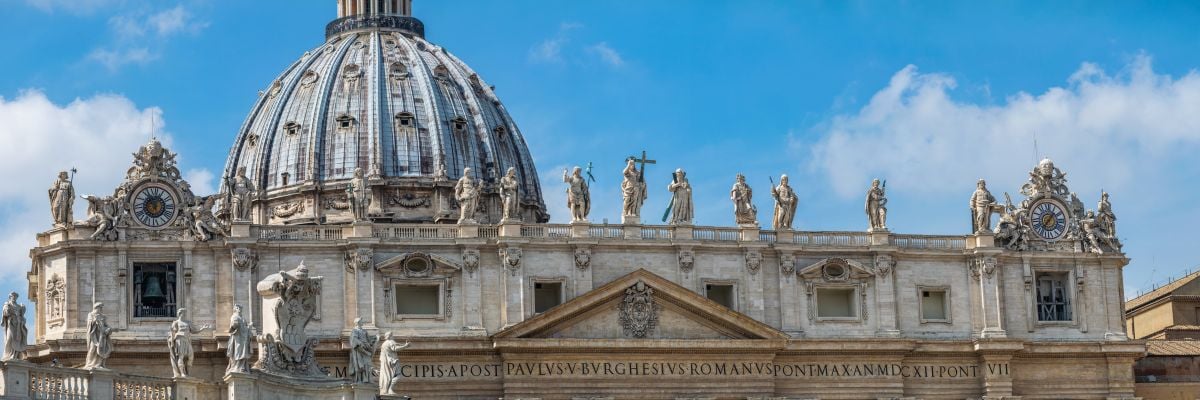
For many Catholics, the Church of England has a certain exotic-yet-familiar quality about it. The patrimony of Anglican liturgy and practices is Catholic in origin, of course. It was in the mid-sixteenth century that King Henry VIII broke from the Catholic Church, declaring himself the head of the church in England. Prior to this move, Henry had been given the title “Defender of the Faith” by Pope Leo X for his powerful and convincing defense of the Catholic faith against the teachings of Martin Luther. Ironically, this is a title that the British monarch retains to this day, in spite of their dramatic turn away from the faith they once so eloquently defended.
Cardinal John Henry Newman was declared a saint by Pope Francis on October 13. Newman is one of the most prominent intellectual figures in the Church in the last 200 years, and his conversion from the Church of England to the Catholic Church was considered a national scandal. While some converts attribute their conversion to a movement of the heart, the story of Cardinal Newman’s conversion is one of intellectual rigor and honesty even in the face of extreme opposition.
So how did his conversion come about, and what can we learn from it? In one of his best-known turns of phrase, Cardinal Newman wrote that “To be deep in history is to cease to be Protestant.” This remarkable observation, which came from his own experience, is precisely what led Newman across the Tiber and home, to Rome.
In some ways, the English Reformation is seen as distinct from the Reformation on the continent, and early Anglicanism is even considered by some not to be Protestant. Initially, the differences between Henry VIII’s church and the Catholic Church were mostly hierarchical rather than doctrinal. Henry proudly retained his title of “Defender of the Faith,” and he was proud to mount such a defense. But by the time John Henry Newman was coming of age a few hundred years later, the Church of England had followed the theological course of the major Protestant denominations.
It was in this Protestant milieu that Newman found himself as a young man at Oxford. In fact, England had become so institutionally Protestant, that the Church hierarchy had been extinguished for hundreds of years.
When Newman was at Oxford, and even for several years after his conversion in 1845, there was no Catholic diocesan hierarchy in England. During the reign of Queen Elizabeth I, daughter of Henry VIII, the Church was persecuted to an even greater degree than before, and the Catholic hierarchy was suppressed. During the early 19th century, however, the number of Catholics in England skyrocketed, and they petitioned the pope to restore the hierarchy, which he did in 1850. This caused a significant surge in anti-Catholic sentiment among many Anglicans.
Newman’s famous line about history leading Protestants to abandon Protestantism has a further meaning as well. One of Newman’s most important and influential works was An Essay on the Development of Christian Doctrine, which was published the year of his conversion. The book painstakingly details the way in which doctrine develops over time, and how such development is different from doctrinal innovation or outright invention. In other words, by digging deep into history, Newman demonstrates that the Protestant position is untenable, and that the Catholic Church is the true Church founded by Jesus Christ.
This also shows the way that human reason can seek a deeper understanding of divine revelation over time. Public revelation ended with the death of the last apostle; but in the ensuing two millennia, we have come to a deeper understanding of many of the most fundamental tenets of the Christian faith. It was not until centuries after the time of the apostles that the Church defined things such as the Trinity, the hypostatic union, the nature of the sacraments, the Immaculate Conception, and Assumption of the Blessed Virgin Mary. These were not innovations at the time of their definitions – but the understanding of these doctrines had developed over time until they were codified by the Magisterium.
As the Second Vatican Council’s Dogmatic Constitution on Divine Revelation, Dei Verbum, says regarding the development of doctrine, “This tradition which comes from the Apostles develops in the Church with the help of the Holy Spirit” (8). The Catholic Church is the custodian and safeguard of divine revelation, with the help of the Holy Spirit that was promised to the apostles and their successors (cf. John 14:16-18). Dei Verbum continues: “For as the centuries succeed one another, the Church constantly moves forward toward the fullness of divine truth until the words of God reach their complete fulfillment in her” (8). Certainly, to be deep in history is to be deep in the Gospels. And with this as your starting point, everything else falls into place.
We see a similar protection given to Peter and the rest of the apostles: “I will give you the keys of the kingdom of heaven, and whatever you bind on earth will be bound in heaven, and whatever you loose on earth will be loosed in heaven” (Matt. 16:19). To the rest of the apostles, while not giving them the keys to the kingdom, he does give them the power to bind and loose (cf. Matt. 18:18-20). It is the sacred duty of the Church to hand on and protect the Catholic faith, and the Holy Spirit will not let the Church lead people astray.
With all of this in mind, the fundamental principle is established: the Catholic Church, through a special grace given it by Christ himself in the Holy Spirit, guards and conveys the truth. Working from that principle, it is clear that God would not abandon his Church, as Luther and the other reformers essentially claimed he had.
St. John Henry Newman’s conversion is a beautiful example of his astute observation in practice: To be deep in history certainly is not only to cease to be Protestant, it is to become Catholic.



